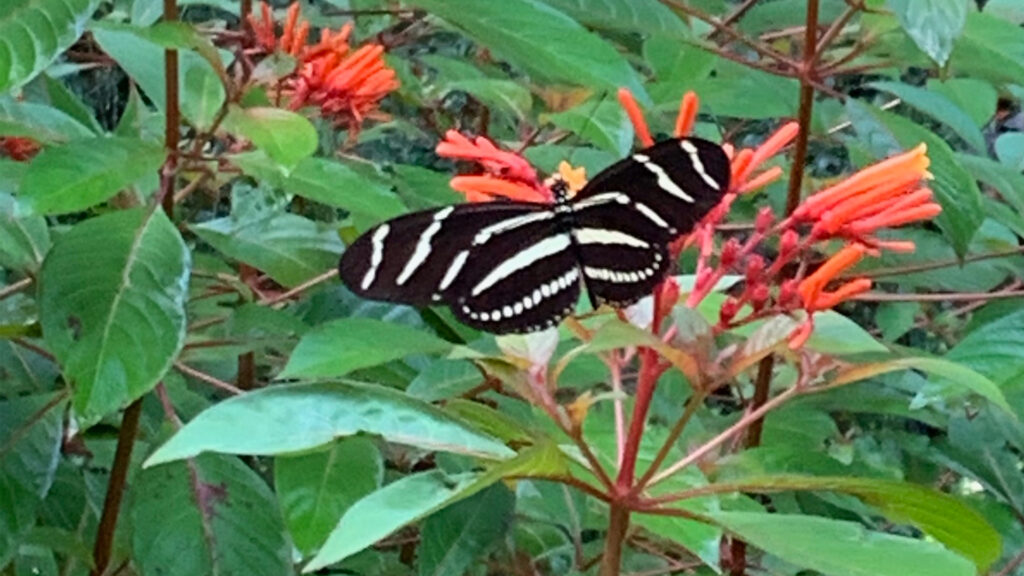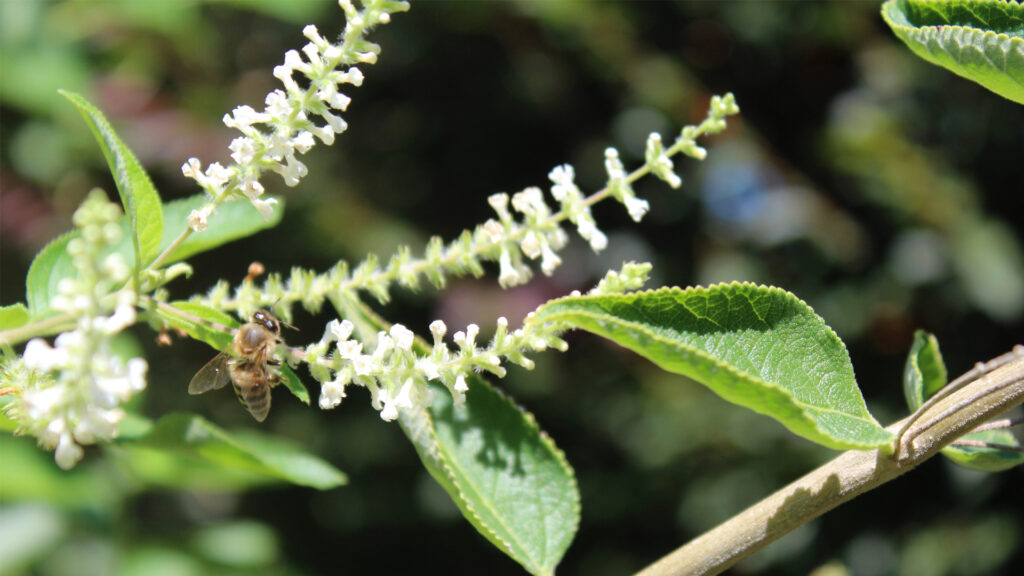By Susan Nugent, Climate Reality Project
This time of year, minds turn to dreams of the garden. In Gainesville, one plant sale after another seemingly occurs every weekend from March through May. Each one calls my name as I drive past.
Many Floridians want their front yards to have curb appeal. My neighbors also turn to gardening, sprucing up their front yards, tending to plants and adding new ones. With a few garden changes, gardeners can do more than beautify the world; they also can become climate activists.
Climate activists work to sequester carbon or to reduce carbon in the atmosphere. Most actions directly address one of these approaches. Making different food choices, riding a bicycle or convincing others to address the warming climate might be primary actions.
Climate gardeners accomplish the same goals by making dynamic changes in their gardens. So why not take steps to sequester carbon while gardening? Why not benefit the environment while designing, maintaining and enjoying the garden?
We know trees sequester carbon, so plant another tree or trees. While writing, I took a break to count my trees: over 40 on my quarter-acre lot. Many are small – plum, crepe myrtle, pear, Walter’s viburnum, buckeye and a fringe tree. Others, including oak and chaste tree, loom above the house.

One of last year’s hurricane winds took down a large maple tree, prompting many changes within my garden. Reduced shade allows me to plant more wildflowers, which invite more pollinators.
Soil also sequesters carbon. Ground covers can protect and develop healthy soil. Given that tackling climate means seeking biodiversity, a lawn – a monoculture – just won’t do.
Lawns present all sorts of problems for the environment. In Florida, lawns need lots of water. As fresh water becomes more and more precious, we all need to consider water’s most beneficial uses. For example, water used for a vegetable garden provides food, not just mimicking life in other times and places.
Lawns also need fertilizer. For cosmetic, unhealthy lawns, U.S. citizens use over 3 million tons of synthetic fertilizer a year. Synthetic fertilizers are created using petroleum, thus adding carbon to our atmosphere.
Not only does synthetic fertilizer further pollute our air, it also adds nitrogen to the water. Rains and overwatering cause that fertilizer to run into our rivers, lakes and detention ponds. That excess nitrogen causes algae blooms, with red tide being only one of the problems related to lawn maintenance.
Neighbors who are trying to keep a “healthy” lawn also have pest control visit once a month. Workers get out of their pickup trucks, dressed in tall rubber boots, to spray yards. Some technicians wear masks, further protecting themselves from the poison they are delivering to each property.

Pesticides kill pollinators. Such poison also harms animals and children. We need to make our yards pollinator friendly, supporting our bees, providing them plants that need no pesticides and flourish in our landscape.
Climate-conscious gardeners reduce the size of the lawn and plant ground covers instead. One of my neighbors has sunshine mimosa in her yard. She placed a sign there during March, “No Mow March.” The sunshine mimosa looked a bit ragged as it started its growing season. But by the end of March her yard filled with powder puffs and shades of pink dominated the landscape.
The University of Florida also adds color to its greens. Yellow dominates with a ground cover of perennial peanut. My front yard exhibits dark green, again perennial peanut, but in the shade. Various other clovers and legumes work well as ground covers that can stand heavy use without fear of damage to plants, animals, or children.
Native plants can adjust to the changing climate more quickly than non-natives. They withstand drought or excess rainfall and varying temperatures of heat or cold.
Natives survive without extra attention or additional supplements. Once established, natives need little, if any, fertilizer, water and attention. They happily grow without our constant care. In contrast, non-natives may need extra water, additional fertilizer and biological or chemical pest control.
Early spring and late fall, gardeners worry about frost and fragile plants. On the other hand, natives offer gardeners a much-needed rest.
Last winter’s freezing temperatures made my native lantana and wild coffee die back to the ground. I worried. However, both now flourish in the garden, looking as healthy as they did before the tough winter. Some non-natives did not survive.
Interestingly, in Audubon’s Issue “The Wonder of Migration,” Saul Weidensaul notes that birds whose migration patterns are changing because of climate tend to feed from native bushes. These birds seek the higher protein in natives. Weidensaul recommends creating native habitat to support migrating birds.
Other planting strategies attract wildlife to the yard. Birds enjoy having plants at a variety of levels from tall to ground covers. The varying height of plants allows more places to hide or nest. Climate gardeners can stagger plants that bloom throughout the year for pollinators. Similarly, plants with berries will make the birds’ diet more nutritious.
Of course, the tools needed for tending our garden also affect the amount of carbon released into the atmosphere. Go electric! A lawn mower powered by gas can emit as much carbon in one hour as does a car traveling 500 miles.

Gov. Gavin Newsom has said that California has more carbon released into the atmosphere from lawn equipment than from cars. Battery-powered weed whackers work well without either the pollutants or the loud noise. Leaf blowers should be eliminated totally because they destroy pollinator habitat. Consequently, climate activist gardeners need to make sure equipment isn’t dependent on fossil fuels.
Those of us who love gardening can change our microhabitats. We can, at the same time, be climate activist gardeners. We can act now to reduce carbon; we can act to create biodiversity; we can act for the welfare of this planet.
We have the power to change the world we leave for others. Our gardens can be better: Garden microcosms can be healthy models to change the world.
Susan Nugent is a Climate Reality Project leader from Gainesville.
If you are interested in submitting an opinion piece to The Invading Sea, email Editor Nathan Crabbe at ncrabbe@fau.edu. Sign up for The Invading Sea newsletter by visiting here.



